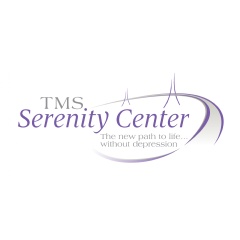TMS Therapy Shows Promise in Treating Generalized Anxiety Disorder (GAD)
Transcranial Magnetic Stimulation (TMS) therapy is currently FDA-approved for the treatment of Major Depressive Disorder but shows great promise in the treatment of Generalized Anxiety Disorder (GAD).
“For patients who suffer from Generalized Anxiety Disorder, Transcranial Magnetic Stimulation is a promising treatment option,” said Kimberly Cress, MD, Psychiatrist and Medical Director at the TMS Serenity Center.
In a recent study “A Retrospective Analysis of Transcranial Magnetic Stimulation Right Dorsolateral Prefrontal Cortex (RDLPFC) Treatments for Patients with Generalized Anxiety Disorder” presented at the American Psychiatric Association (APA) Annual Meeting by Dr. Kimberly Cress of the TMS Serenity Center, located in the Houston suburb of Sugar Land, TX, demonstrated that individuals diagnosed with Generalized Anxiety Disorder who received low-frequency, RDLPFC TMS therapy showed significant improvement of anxiety, with 60 percent of patients achieving remission, as well as relief from their depressive symptoms in those who have comorbidity.
“For patients who suffer from Generalized Anxiety Disorder, the treatment options are often limited to medications that can come with unwanted side effects or psychotherapy,” said Dr. Kimberly Cress. “Our findings support RDLPFC TMS in the treatment of Generalized Anxiety Disorder and can also provide relief from depressive symptoms” said Cress.
Twenty patients diagnosed with Generalized Anxiety Disorder were treated with low-frequency, right-sided Transcranial Magnetic Stimulation using the NeuroStar TMS Therapy System (Neuronetics, Inc., Malvern, PA, USA). Patients were treated daily (five days a week for approximately four to six weeks) with a range of 1,600 to 2,400 pulses delivered only to the RDLPFC. The study’s primary outcome of interest was the change in anxiety symptoms utilizing the Beck Anxiety Inventory Scale (BAI). The mean baseline score was 19.0, indicating moderate anxiety, with a mean end point score of 7.8, demonstrating significant improvement. Overall, 14 out of 20 patients (70 percent) demonstrated response with a 50 percent improvement in symptom severity.12 out of 20 patients (60 percent) achieved remission of anxiety symptoms during acute treatment.
Moreover, of the 20 patients included in the evaluation, 11 patients experienced moderate to severe depression at baseline based on the BDI II symptom scale. At the end of the acute phase, response and remission rates were 75 percent and 50 percent, respectively, with a mean end point score of 10.4, indicating remission. There were no serious adverse events reported.
These findings support the use of low-frequency, RDLPFC TMS therapy for those who suffer from GAD and/or present with a comorbidity of depression.
About TMS Therapy and the TMS Serenity Center
TMS Therapy is currently indicated for the treatment of Major Depressive Disorder in adult patients who have failed to receive satisfactory improvement from antidepressant medication in the current episode. TMS Therapy is a non-systemic and non-invasive form of neuromodulation. It stimulates nerve cells in the brain by delivering highly focused MRI-strength magnetic field pulses which lead to activation of cortical and deep brain structures known to be involved in mood regulation. The first TMS Therapy device, NeuroStar TMS Therapy System, was FDA-cleared in 2008 on the basis of the largest randomized controlled trial evaluating TMS in depression. The TMS Serenity Center has performed over 10,000 treatments since April of 2010.
( Press Release Image: https://photos.webwire.com/prmedia/55128/203355/203355-1.png )
WebWireID203355
- Contact Information
- Kerstin Brown
- Communications Director
- TMS Serenity Center
- (1) (281) 240-4322
- Kerstin@kimcress.com
This news content may be integrated into any legitimate news gathering and publishing effort. Linking is permitted.
News Release Distribution and Press Release Distribution Services Provided by WebWire.
